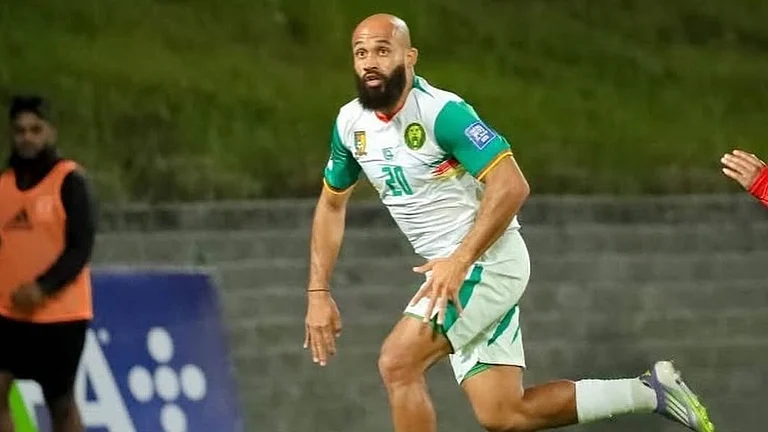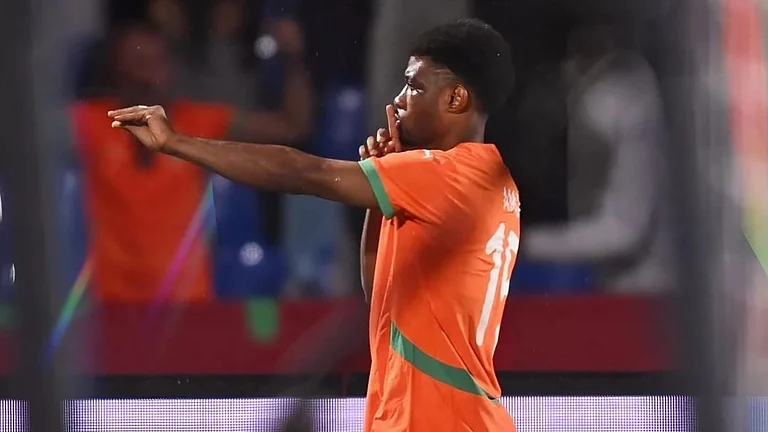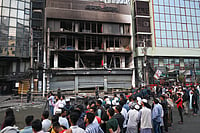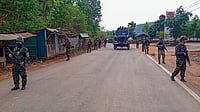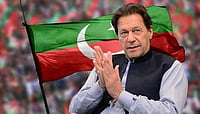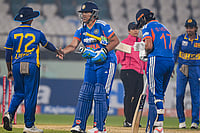AS Gulkhana Palace changed hands on September 27, the political event fast translated into a whole new social order for the people of Kabul. The signs of things to come became clear right away: former president Najibullah was hanged with a symbolic cigarette between his fingers, women scurried to dig out their ejabs and television sets—the ultimate symbol of western values—lay smashed.
And on the day Kabul fell, all roads led to two adjacent locations. At the Arg—or the Gulkhana Palace—the huge gate was flung open to reveal a garlanded Taliban tank. (The Taliban insisted the garlands were presented by grateful Kabul residents who considered them saviours.) And in front of the Arg was a huge signboard with disfigured portraits of Rabbani, Masood and other faction leaders. However, a portrait of Ghulam Mohamed Niazi, a pioneer of the Islamic movement in Afghanistan, was left untouched.
The second destination of most Kabulis, who streamed in on foot and bicycle, was the Ariana Square, where the bodies of Najibullah and his younger brother Ahmedzai were hung from the concrete traffic signal posts. Most Kabulis were disgusted by the sight, but could register no protest for fear of the Taliban. The armed Taliban guards not only kept onlookers at a distance—pushing and shoving and once in a while pretending to hit them with rifle butts—but also seized every opportunity to dishonour the dead men. They stuffed currency notes and cigarettes into their mouths, noses and pockets and changed the position of the dangling corpses for the benefit of cameramen.
It’s a military rags-to-riches story. By taking Kabul just two years after their emergence in Kandahar, the Taliban capped a remarkable run of military victories that crowns them as the strongest political and armed force now in Afghanistan. Hailing from the poorest and most resourceless sections of Afghan society, the Taliban have effected a revolution that has turned the once mighty Mujahideen commanders into nobodies.
And for President Burha-n-uddin Rabbani’s military strongman Ahmad Shah Masood, this latest attack on Kabul proved sixth time unlucky. He had successfully defended the capital five times over four-and-half-years—twice against Hezb-i-Islami chief Gulbaddin Hekmatyar, once when Hekmatyar and General Abdul Rasheed Dostum launched a joint attack in January 1994, and twice against the Taliban.
Kabul’s fall was the climax of a Taliban attack that began in Paktia province in southern Afghanistan and lasted over 50 days. Sticking to a meticulous schedule and preferring lightning attacks, they first went for Jaji garrison, a Hekmatyar base. Their next target was another Hekmatyar stronghold, Spina Shaga, on the border with Pakistan’s Khurram Agency. They then took rival bases in the Mangal area and in Shahr-i-Nau in Paktia. And as the Taliban continued their march towards Azraw in Logar province, where another Hekmatyar base fell, the way was now clear for them to enter the strategically-located Nangarhar province via Hisarak.
The ruling Mujahideen Shura in Nangar-har, led by Haji Abdul Qadeer, gave up after a brief resistance, paving the way for a Taliban push towards Jalalabad. Haji Qadeer and most members of the ruling Shura sought refuge in Pakistan. Such was the panicky retreat of their forces that the first Taliban who made a triumphant entry into Jalalabad under Mulla Borjan came in only four pick-up vehicles. Over the next several days, groups of mobile Taliban fighters captured the rest of Nangarhar province bordering Pakistan and then took Laghman, the lone province held by Hekmatyar’s group.
By the time the Taliban reached Kunar province, from Laghman, its people were raising white flags to signal their support to the student militia. The death of Sher Afzal, deputy to Kunar’s pro-Kabul military commander Jehandad, unravelled his defences and before long the Taliban were in the provincial capital, Asadabad.
After consolidating themselves in eastern Afghanistan and securing their supply lines, the Taliban turned their attention to the strategically vital Jalalabad-Kabul highway. Their first target was Mashali Kandao and Wrekhmin Tangi, the gorge beside the Kabul river which was deemed impregnable by many Afghans. Despite counterclaims by the Rabbani government, its forces failed to break through Taliban frontlines on the road to Jalalabad. In a counter-attack, the Taliban broke through, forcing government troops to flee towards Sarobi. The next battle was fought at Sarobi, sited almost midway between Kabul and Jalalabad. The Taliban, in a three-pronged attack, gave no chance to its defenders. And the road to Kabul was now open.
IT was the crushing defeat at Sarobi that demoralised the government forces and hampered their defence of Kabul. The Taliban launched a coordinated, three-pronged attack from the east, south and west of Kabul, stretching the government’s beleaguered defences and forcing many defenders to flee. Even the fierce, last-ditch aerial bombing by government jet-fighters failed to halt the Taliban advance and by 10 pm on September 26, they were about to enter the Arg (Gulkhana Palace) in downtown Kabul. Later in the night, the Taliban broke through the government’s southern frontlines from Charasyab side and linked up with other advancing Taliban fighters. Their stranglehold over Kabul was complete by dawnon September 27, and Rabbani-Masood’s retreating forces were trying to take as much as possible to their strongholds in Charikar, Jablus Siraj and Panjsher. The Taliban subsequently captured Charikar and Jablus Siraj and were now attempting to crush once for all Masood’s power in his native Panjsher valley. They also took Bagram airbase and collected a war-booty of several jet-fighters, helicopters and other military hardware. However, there are reports that Masood managed to take away some of the jets.
Now in control of 20 provinces out of 32 in Afghanistan, the Taliban seem for the first time to be weighing the prospects of uniting the whole country under one leadership and administration. Therefore, it seems the Taliban are now turning attention to provinces still not under their command. It won’t be difficult for them to take over the almost defenceless Nuristan province and arrive at some arrangement with Bamiyan province, which is held by the Shiite Hezb-i-Wahdat, in central Afghanistan. That leaves the three northern Afghanistan provinces of Badakhshan, Takhar and Kunduz, which are still under control of the ousted government. A local uprising there with the Taliban’s or Dos-tum’s blessings cannot be ruled out now.
However, Dostum’s Jumbush-i-Milli Isl-ami controls six provinces—Balkh, Jau-zijan, Fariab, Saripul, Samangan and Baghlan—and remains a formidable power in northern Afghanistan.
Realising the problems of taking on both the Rabbani-Masood combine and Dostum at the same time, the Taliban are said to be trying to come to an understanding with Dostum. Besides the division of forces fighting on two fronts would entail, such a tactic could also result in a Dostum-Rabbani alliance and plunge Afghanistan into a non-Pashtuns vs Pashtuns civil war.
And so, while addressing his first press conference in Kabul, Taliban leader Mulla Rabbani made it a point to speak well of Dostum, describing him as a "good and honest Muslim" and recalling their satisfactory ties in the past. He said it was important to work closely with Dostum to bring peace, stability and the Islamic system to Afghanistan. For his part, Dostum had earlier claimed that there could be no viable peace in Afghanistan without the active involvement of the Taliban.
Having said that, a flexing of muscles in the future on the part of Dostum and the Taliban appears inevitable, primarily due to the fact that they espouse different ideologies and would find it hard to coexist.
Another obstacle the Taliban face is the reaction, domestic and international, to their decision to impose a strict Islamic code. Already, there has been international condemnation of alleged human rights violations—specially vis-a-vis women’s rights—at the hands of the Taliban and the introduction of harsh Islamic punishments.
The possibility of the Taliban being able to defeat Dostum and reach Afghanistan’s borders with the Central Asian Republics of Uzbekstan, Tajikistan and Turkmenistan has these states and the Russians on tenterhooks. A worried Russian President Boris Yeltsin has called for a summit of the Commonwealth of Independent States to discusss the issue. Iran too has expressed its concern over the growing Taliban presence in its backyard, with the Iranian press accusing the US, Saudi Arabia and Pakistan of being hand-in-glove with the Taliban. Iran had plans to organise a conference of the regional countries to discuss the conflict in Afghanistan this month. This puts paid to that plan. Iran does not think that the takeover in Kabul can be the solution. It disagrees with the radical form of Islam preached by the Taliban and feels that the situation will get more complicated.
And while the Taliban right now are on a winning spree, it remains to be seen if they are capable of governing Afghanistan, carrying along with them other forces and representatives of different ethnic and linguistic groups and areas. They also face the prospect of rebuilding the country without outside funds, which may not materialise if they fail to tone down some of the harsher measures concerning women.
This is not to say that there has been no appreciation by the public at large. The key to Taliban success until now has been their ability to tackle crime by disarming armed bands and executing murderers and amputating the limbs of thieves. Moreover, they are also attracting support on account of their success in removing checkposts on roads, thus keeping key routes open and ensuring steady supplies.
By reopening Kabul’s Khwaja Rawash airport after a year-long closure just three days after capturing the city and initiating efforts to restore power supply, they have given the impression of being capable of restoring essential services to the population.
But doubts still remain about their origins, their real military prowess, their commitment to democracy and human rights, and their willingness to transfer power to a more representative government encompassing all ethnic and regional groups. So, efforts to form a more representative government—under UN auspices and possibly giving a role to ex-king Zahir Shah—are likely to continue. As will the uncertainty that has been hanging over Afghans for most of the ’90s.
(Rahimullah Yusufzai was among the first journalists to reach Kabul after the Taliban takeover.)







